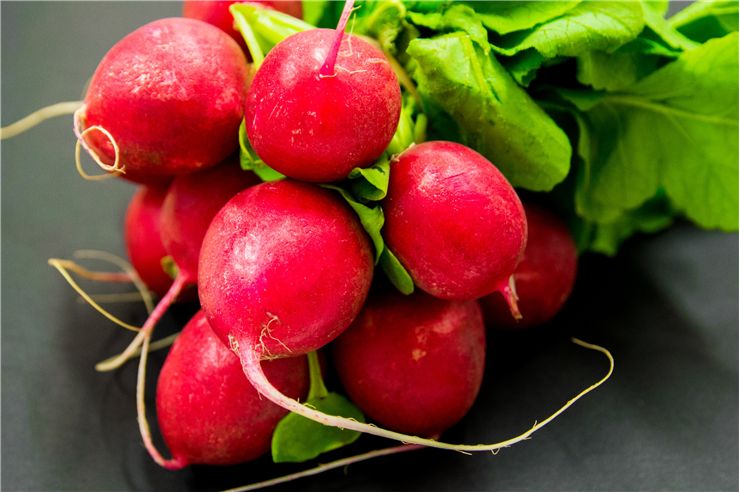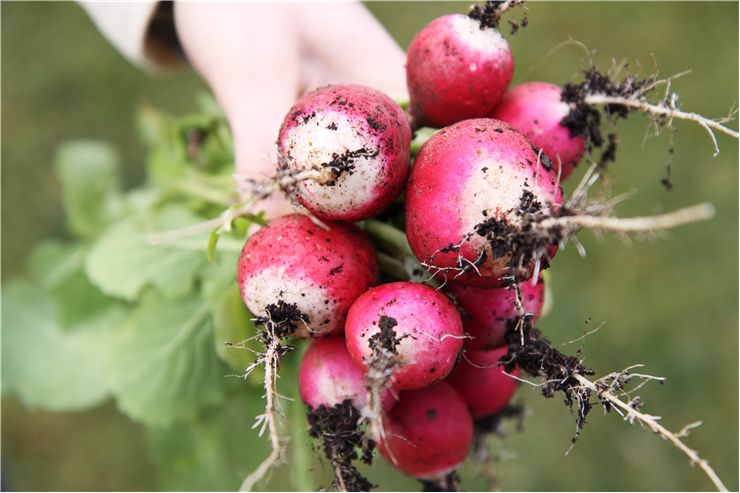Radish History - Varieties of Radishes
Radish (from the Latin word “radix” which means “root”) is a vegetable plant with an edible root which we use raw in salads. It is a biennial or annual plant whose root can be globular, tapering or cylindrical and which is crisp and sweet to some extent but it can be bitter if it is left on the ground for too long. There are also spicy variants of radish. To be ready to eat, smaller radish types don't need more than a month to grow while larger need several months. Some of the radishes are not grown for their roots. Some are grown for seeds from which oil is produced while some other are grown for sprouting and are prepared cooked together with their leaves.
There are no archeological proofs when and where we started domesticating radishes, but only wild variants appear in the southeast Asia, so that is a good place to start. Other variants of radishes started appearing in India, central China, and Central Asia where the radishes spread. The first written records that mention radishes come from 3rd century BC. Ancient Greeks and Romans also have text where they write about them, and they even give different types like small, large, round, long, mild, and sharp. When the Americas were rediscovered, radish was one of the earliest vegetables to be brought over from the Europa.

Today, after all, the cultivation, we have many variants of radishes. They can be classified into four main types, according to the time of harvest into summer, fall, winter, and spring radishes and according to the lengths, colors, and sizes.
Summer radishes (or if they are planted when the weather is colder - spring radishes) are of smaller variant and need three to four weeks to be ready for harvesting. Radishes that are grown as summer radishes are The April Cross, Bunny Tail, Cherry Belle, Red King, Champion, Sicily Giant, Snow Belle, White Icicle, French Breakfast, Plum Purple, Gala, Roodbol, and Easter Egg. Winter types are Black Spanish Round, Daikon (also known as Japanese radish, Chinese radish, Oriental radish or mooli), Masato Red, Masato Green, and Sakurajima radish (which is very hot and can grow up to 30kg). Radishes grown for their seeds or seed pods are Rat-tailed radish and München Bier among others.
Radish is a rich source of ascorbic and folic acid, potassium, vitamin B6, riboflavin, magnesium, copper, and calcium. As we said, the root of a radish is mostly eaten as a salad, but that is not the only way this vegetable can be eaten. Leaves of a radish can be eaten in potato soup or as a sauteed side dish. Root can be steamed if it is too tough to eat raw. Seeds can be pressed to extract radish seed oil (which is not used for human consumption but as a basis for biofuel), or it can be sprouted and eaten like that.
When buying radishes, you should choose smaller ones to avoid strong flavor and the wooden texture. Radishes should also be heavier to avoid hollow ones.
If you cut off the tops of the radishes when you buy them and store them in the plastic bags, they can last up to two weeks in the refrigerator. To store them for a longer time (i.e. during winter), you can store them in moist sand and place them in a cold basement or root cellar.

December 23rd in Oaxaca, in Mexico, is known as “The Night of the Radishes” - a festival when people carve radishes in different shapes.
As the last fact: laborers who built pyramids in the ancient Egypt were paid in onions, garlic and – radishes.

